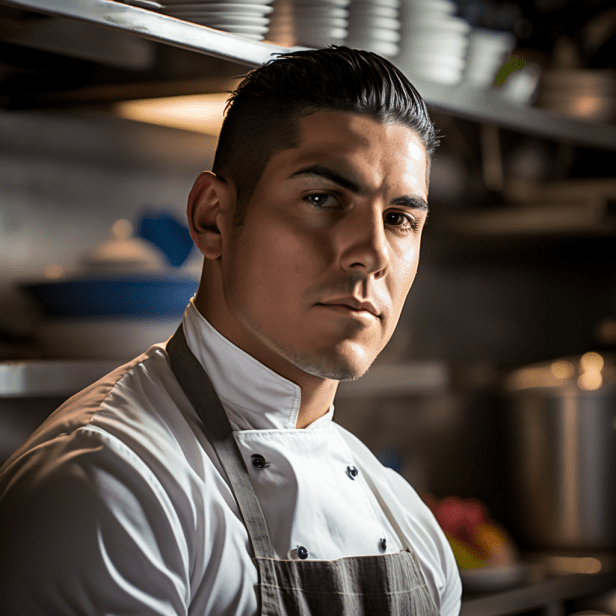There’s a simple street food that tells a complex story through its names. Koah-pau and Gua Bao—two terms that sound different but point to the same steamed bun filled with braised pork belly, pickled mustard greens, cilantro, and crushed peanuts. This dish, originating from Fujian province and embraced by Taiwan and other parts of Asia, wears many names depending on language and region. Understanding why it’s called Koah-pau in one place and Gua Bao in another reveals a fascinating blend of culinary history, linguistic variation, and cultural identity. This article unpacks the story behind these names and how one dish can carry many voices.
Key Takeaway
- Koah-pau and Gua Bao are different pronunciations of the same traditional steamed pork belly bun (1).
- The name literally means “cut bun,” describing the bun’s shape and serving style (2).
- Regional dialects and cultural transmission have led to multiple names and culinary variations.
Origins and Cultural Background
Koah-pau (割包) and Gua Bao (割包) come from Fujian province in China (3), particularly from Quanzhou or Fuzhou, and have become staples in Taiwanese cuisine. The dish has also spread widely to Singapore, Malaysia, the Philippines, and even Nagasaki Chinatown in Japan (4).
The bun itself is a soft, semi-circular steamed bread known as lotus leaf bread (荷葉餅, héyèbǐng), about 6 to 8 centimeters wide . It’s folded horizontally to cradle the filling, resembling a sandwich but with a distinctly Asian twist.
Name and Etymology: Linguistic Roots of Koah-pau and Gua Bao
The key to understanding the different names lies in language.
- In Hokkien, gua/cua (割/刈; Pe̍h-ōe-jī: koah) means “to cut” or “to slice,” referring to how the bun is sliced open.
- Bao/pao (包; Pe̍h-ōe-jī: pau) means “bun.”
- So, Koah-pau or Gua Bao literally means “cut bun.”
This simple name describes the bun’s shape and how it’s served. The difference between Koah-pau and Gua Bao comes down to dialect and pronunciation—Koah-pau is the Taiwanese Hokkien term, while Gua Bao is Mandarin.
The English phrase “bao bun” is linguistically redundant because bao already means “bun,” much like saying “chai tea.” Yet, it’s become common in menus abroad to help unfamiliar diners.
Traditional Ingredients and Preparation
The classic filling is a slice of red-cooked (braised) pork belly, slowly simmered with soy sauce, star anise, cinnamon, and Shaoxing wine. This tender, flavorful meat contrasts beautifully with the soft steamed bun (5).
Pickled mustard greens (suan cai) add a tangy crunch, fresh coriander (cilantro) brings brightness, and crushed peanuts provide texture. The bun’s pillowy softness balances the rich pork and sharp condiments, creating a harmony of flavors and textures.
Cultural Significance and Regional Variations
In Fujian, the dish is sometimes called rou jia bao (肉夹包, “meat between buns”) or hu yao shi (虎咬狮, “tiger bites lion”). Taiwan has a playful nickname too—hó͘-kā-ti (虎咬豬, “tiger bites pig”)—referring to the bun’s shape resembling a mouth biting into the filling.
Historically, this bun was a special-occasion food, enjoyed during festivals, weddings, and celebrations. Over time, it became a beloved street food, especially in Taiwanese night markets.
Variations abound: fried chicken, fish, eggs, stewed beef, and vegetarian fillings have all found their way inside the folded bun, showing the dish’s adaptability.
Popularity and Global Spread
By the 1970s, Gua Bao had become a common street snack in Taiwan. Since then, it has gained international fame, appearing in restaurants and food festivals worldwide.
Its half-open bun shape invites creativity, allowing chefs to experiment with fusion fillings and presentations. Despite these innovations, the traditional pork belly version remains iconic.
Why So Many Names?
The dish’s multiple names reflect linguistic diversity and cultural transmission across Asia.
- Taiwan’s multilingual environment means dishes often have different names depending on whether Taiwanese Hokkien or Mandarin is spoken.
- As the dish spread internationally, English speakers coined descriptive names like “pork belly bun” or “Taiwanese hamburger” to make it accessible.
- Regional dialects and local customs also influence naming, leading to terms like Cuapao in the Philippines or Kong Bak Pau in Malaysia and Singapore.
Common Misunderstandings
The term “bao” can cause confusion since it broadly refers to filled steamed buns (baozi). Gua Bao is a specific style—a folded, cut bun—while baozi are usually round and fully enclosed.
“Bao bun” is redundant but widely used in English menus. Similarly, “Taiwanese hamburger” simplifies the dish by comparing it to a Western sandwich, which helps marketing but loses some cultural nuance.
Food Anthropology: What Names Tell Us
Food names are more than labels; they carry history, identity, and culture. Koah-pau and Gua Bao show how language shapes how we relate to food. They reveal migration patterns, linguistic shifts, and cultural pride.
Understanding these names helps decode the story behind the dish, connecting us to the people and places that made it beloved.
Practical Tips for Enjoying Koah-pau/Gua Bao
- Don’t get hung up on the name—Koah-pau, Gua Bao, or pork belly bun all point to the same delicious snack.
- Try versions from different regions to taste subtle variations.
- Pay attention to the balance of soft bun, tender pork, tangy pickles, fresh herbs, and crunchy peanuts.
- Explore recipes to appreciate the slow braising and steaming techniques that make the dish special.
- Visit Taiwanese night markets or Asian fusion restaurants to experience the dish’s cultural context.
Final Thoughts
The story behind Koah-pau and Gua Bao is a reminder that food is a living tradition, shaped by language, culture, and history. One dish, many names, countless stories. Each bite connects us to a rich culinary heritage that spans regions and tongues. So next time you savor that soft bun filled with savory pork, remember you’re tasting a piece of a larger story, one told in many voices but always delicious.
FAQs
What’s the difference between koah-pau and gua bao if they’re the same dish?
The terms koah-pau and gua bao represent the same dish but come from different languages and regional dialects. This linguistic variation shows how the same traditional dish can have different names across cultures. The name difference reflects language influence from various regions where this popular pork belly bun is enjoyed. Both refer to the beloved steamed bun filled with tender meat, but the naming convention depends on local food names and cultural linguistics in different areas.
How did food naming and dish translation create these different names?
Food naming often reflects the culinary roots and language roots of different regions. The name evolution from koah-pau to gua bao demonstrates how dish translation works across cultures. Asian food terms frequently vary based on regional dialects and local pronunciation patterns. This linguistic variation in food semantics shows how the same dish identity can be expressed through different culinary terms, creating diverse ways to describe identical traditional food preparations.
What role does bun culture play in understanding these naming conventions?
Bun culture in Asian cuisine encompasses much more than just the food itself – it includes the cultural food traditions and food heritage surrounding these dishes. The traditional bun holds deep significance in food culture, and understanding bun terminology helps explain why koah-pau and gua bao exist as different names. This cultural linguistics aspect reveals how food anthropology influences naming convention practices, showing that bun culture shapes how communities identify and preserve their culinary diversity.
Where did the culinary origin of this Taiwanese bun actually begin?
The culinary origin and food history of this Taiwanese street food trace back centuries through Asian cuisine traditions. Historical records suggest the dish identity formed through cross-cultural food exchanges, though pinpointing exact gastronomic roots proves challenging. The koah-pau origin and gua bao history likely developed simultaneously in different regions, explaining why regional cuisine variations exist today. This traditional dish represents how food tradition evolves across different cultural contexts while maintaining its core identity.
Why do street food vendors use different terms for the same pork belly bun?
Street food culture embraces local food names that resonate with specific communities. Vendors often use terms familiar to their customers, whether that’s koah-pau, gua bao, or other regional specialties terminology. This same dish, with different names, reflects how Taiwanese street food adapts to diverse linguistic environments. The food identity remains consistent – a delicious steamed bun with savory filling – but the culinary terms change based on cultural context and customer expectations.
How does language variation affect the way we understand traditional dishes?
Language variation in food creates rich layers of meaning around dish identity and cultural significance. The koah-pau and gua bao example shows how different names can preserve distinct cultural memories of the same traditional dish. This linguistic variation doesn’t change the bun recipe or preparation methods, but it does influence how communities connect with their food heritage. Understanding these language influence patterns helps preserve the full story behind beloved regional cuisine.
What makes this steamed bun such an important part of Asian food culture?
This steamed bun represents centuries of food tradition and cultural food practices across Asia. Its significance extends beyond being just another snack history entry – it embodies how communities maintain their culinary roots while adapting to modern contexts. The traditional bun serves as a bridge between past and present, carrying forward food heritage through both its preparation methods and the various names like koah-pau and gua bao that different cultures have given it.
How can understanding food etymology help us appreciate culinary diversity better?
Food etymology reveals the deep connections between language, culture, and culinary diversity in our global food landscape. Studying terms like koah-pau and gua bao helps us understand how food semantics preserve cultural identity across generations. This food anthropology approach shows that Asian food naming conventions carry stories about migration, cultural exchange, and community identity. Appreciating these culinary terms enriches our understanding of how food culture transcends simple recipes to become living cultural artifacts.
Conclusion
The story of Koah-pau and Gua Bao shows how food carries more than flavor—it carries language, culture, and history. Though the names differ, the heart of the dish remains the same: a soft steamed bun embracing tender braised pork and vibrant condiments. These names reflect the rich tapestry of dialects and traditions across Asia, reminding us that culinary identity is fluid and layered. Understanding this helps us appreciate not just the taste but the journey of a dish that connects people across borders and generations.
References
- https://lifehacker.com/food-drink/what-is-gua-bao
- https://id.wikipedia.org/wiki/Gua_bao
- https://kids.kiddle.co/Gua_bao
- https://www.malaymail.com/news/eat-drink/2024/09/24/track-down-this-guabao-shop-in-petaling-street-for-their-og-pork-bao-and-fish-tempura-bao-with-mala-sauce/151440
- https://omnivorescookbook.com/gua-bao/
Was this helpful?

I am a skilled chef assistant with a passion for Asian cuisine, I have honed my craft through formal training at At-Sunrice GlobalChef Academy and years of experience in the culinary industry. I have extensive knowledge of cooking techniques and herbs and spices, with a particular focus on traditional Chinese dishes. I’m also an author of the book “Delicious Keto Low Carb Chinese Food for Busy Moms and Fitness Enthusiasts” which is sold on Amazon. On my blog, bowlakechinese.com, I share my expertise in Asian cuisine and provide tips and recipes for those interested in low carb Chinese cuisine.
